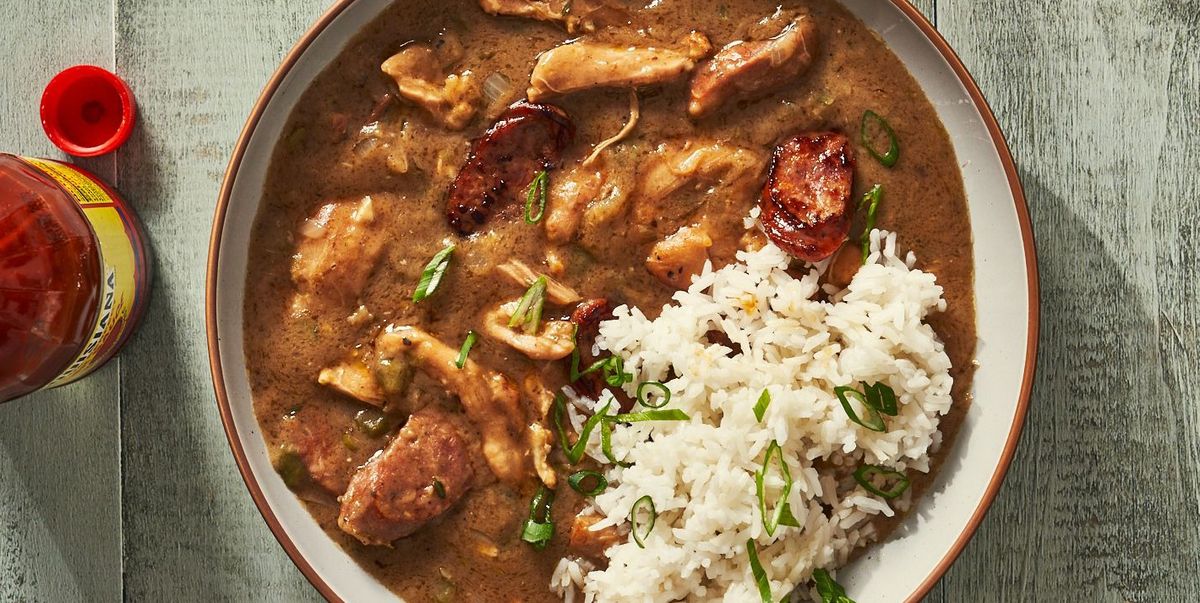
Gumbo is an undisputed Louisiana staple, right up there with jazz and
fluffy beignets. While every household has their own preferred recipe, we’ve got all the tips & tricks here for an extra-flavorful bowl of this chicken and sausage dish. Our top secret for the most delicious gumbo possible? It’s all in the dark roux.
If this is your first time making this classic dish at home, follow our easy recipe for everything you need to perfect this dish, and a staple roux:
What is gumbo?
Like all Cajun and Creole cooking, gumbo pulls its flavors and techniques from a diverse combination of African, Native American, French, and Spanish cultures. The name “gumbo,” while often thought to have French origins, is actually derived from the West African word for okra, ki-ngombo. Okra, one of many crops that made its way to the American south via the Trans-Atlantic slave trade, was commonly used as a thickener for this earthy stew. Now it’s much more likely to find okra in seafood and Creole variations, and omitted from meat-heavier Cajun ones, like this recipe.
Not to be mistaken for jambalaya or shrimp étouffée, gumbo comes in many forms, but it always absolutely must:
— Be thickened by a dark brown roux.
— Be served over rice (or with potato salad if you’re extra Southern).
— Feature the holy trinity of Southern cooking: onion, celery, and green bell pepper.
How to make the roux:
One thing that all Cajun gumbo connoisseurs can agree on is that it starts with a good roux. Roux is a thickening agent, commonly used in soups and sauces, made of equal parts flour and fat. Cajun gumbo will typically call for oil or lard as the fat while Creole gumbos rely on butter. The flour is toasted in hot oil until it reaches the desired shade of brown. Lighter (or blonde) roux is primarily used for thickening, but for the unmistakably deep flavor you’ll want here, you’ve got to go dark brown. By the time it’s done cooking, the roux should resemble the color of a melted milk chocolate bar.
Tip: Don’t walk away once you’ve started cooking the roux! Once the mixture burns, there’s no going back; starting over will be your only option. Be sure to keep it low and slow, whisking to make sure it cooks evenly. Patience is key here.
Gumbo variations:
The true spirit of Cajun gumbo is using what you have on hand. If you can’t find andouille, grab some kielbasa. Prefer drumsticks or chicken breast? Go for it. If your grandma always topped her gumbo with file powder (another classic thickener and flavoring made from ground sassafras leaves), have at it. Can’t do without shrimp in your gumbo? Our classic shrimp and sausage gumbo is a true crowd-pleaser.
How to serve gumbo:
Gumbo is often traditionally served spooned over rice or potato salad, and we chose to top our bowls with our green onions. If you’re looking for side ideas, you can’t go wrong with fried okra, collard greens, cheese grits, or sweet potato tots.
Storage:
If you have any leftovers, we recommend storing them in an airtight container in the fridge for no more than 2-3 days. You can also freeze your gumbo for up to 6 months.
Made this? Let us know how it went in the comments below!
Gumbo is an undisputed Louisiana staple, right up there with jazz and
fluffy beignets. While every household has their own preferred recipe, we’ve got all the tips & tricks here for an extra-flavorful bowl of this chicken and sausage dish. Our top secret for the most delicious gumbo possible? It’s all in the dark roux.
If this is your first time making this classic dish at home, follow our easy recipe for everything you need to perfect this dish, and a staple roux:
What is gumbo?
Like all Cajun and Creole cooking, gumbo pulls its flavors and techniques from a diverse combination of African, Native American, French, and Spanish cultures. The name “gumbo,” while often thought to have French origins, is actually derived from the West African word for okra, ki-ngombo. Okra, one of many crops that made its way to the American south via the Trans-Atlantic slave trade, was commonly used as a thickener for this earthy stew. Now it’s much more likely to find okra in seafood and Creole variations, and omitted from meat-heavier Cajun ones, like this recipe.
Not to be mistaken for jambalaya or shrimp étouffée, gumbo comes in many forms, but it always absolutely must:
— Be thickened by a dark brown roux.
— Be served over rice (or with potato salad if you’re extra Southern).
— Feature the holy trinity of Southern cooking: onion, celery, and green bell pepper.
How to make the roux:
One thing that all Cajun gumbo connoisseurs can agree on is that it starts with a good roux. Roux is a thickening agent, commonly used in soups and sauces, made of equal parts flour and fat. Cajun gumbo will typically call for oil or lard as the fat while Creole gumbos rely on butter. The flour is toasted in hot oil until it reaches the desired shade of brown. Lighter (or blonde) roux is primarily used for thickening, but for the unmistakably deep flavor you’ll want here, you’ve got to go dark brown. By the time it’s done cooking, the roux should resemble the color of a melted milk chocolate bar.
Tip: Don’t walk away once you’ve started cooking the roux! Once the mixture burns, there’s no going back; starting over will be your only option. Be sure to keep it low and slow, whisking to make sure it cooks evenly. Patience is key here.
Gumbo variations:
The true spirit of Cajun gumbo is using what you have on hand. If you can’t find andouille, grab some kielbasa. Prefer drumsticks or chicken breast? Go for it. If your grandma always topped her gumbo with file powder (another classic thickener and flavoring made from ground sassafras leaves), have at it. Can’t do without shrimp in your gumbo? Our classic shrimp and sausage gumbo is a true crowd-pleaser.
How to serve gumbo:
Gumbo is often traditionally served spooned over rice or potato salad, and we chose to top our bowls with our green onions. If you’re looking for side ideas, you can’t go wrong with fried okra, collard greens, cheese grits, or sweet potato tots.
Storage:
If you have any leftovers, we recommend storing them in an airtight container in the fridge for no more than 2-3 days. You can also freeze your gumbo for up to 6 months.
Made this? Let us know how it went in the comments below!
- Yields:
-
10
serving(s)
- Prep Time:
- 25 mins
- Total Time:
- 2 hrs 25 mins
- Cal/Serv:
- 329
Directions
-
- Step 1
In a small bowl, combine the salt, paprika, pepper, garlic powder, mustard powder, and cayenne.
- Step 2In a large, heavy-bottomed pot or Dutch oven, heat 1 tablespoon oil over medium-high heat. Pat the chicken thighs dry and season all over with 1 tbsp plus 2 tsp of spice mixture. Sear the chicken thighs in the hot oil, turning occasionally for even browning, until cooked through, about 12 minutes. (The chicken should have a brown crust on both sides.) Transfer the chicken to a large bowl.
- Step 3Add the sausage to the same pot and cook until it starts to brown slightly and the edges begin to curl, about 3 minutes. Transfer the sausage to the bowl with the chicken.
- Step 4Add ½ cup of chicken broth and deglaze the pot, using a wooden spoon to scrape up any browned bits left behind. Pour the deglazing liquid over the chicken and sausage and set aside to cool.
- Step 5Make the roux: Wipe the pot clean and return to medium-high heat. Add remaining 1 cup oil and heat until you start to see wisps of smoke. Add the flour all at once, reduce heat to medium-low, and whisk continuously. Continue cooking and occasionally whisking, allowing the roux to darken until it reaches a deep brown, milk chocolate color, about 20-25 minutes. (The texture should resemble wet sand.)
- Step 6As soon as the roux is done, add the onion, bell pepper, celery, bay leaves and a big pinch of salt. Increase the heat to medium and cook for 5 minutes, stirring frequently to keep the roux from burning. Add garlic, scallion whites, and thyme, and cook for an additional 1 minute. Whisk in the remaining 6 cups chicken broth.
- Step 7Using clean fingers or a fork, shred the chicken into bite sized pieces, then return the chicken, sausage, and deglazing liquid to the pot. Bring everything to a simmer and cover. Allow the gumbo to simmer for at least 1 hour (and up to 4 hours) to give the flavors a chance to meld. Remove bay leaves and top with green onions before serving.
- Step 1


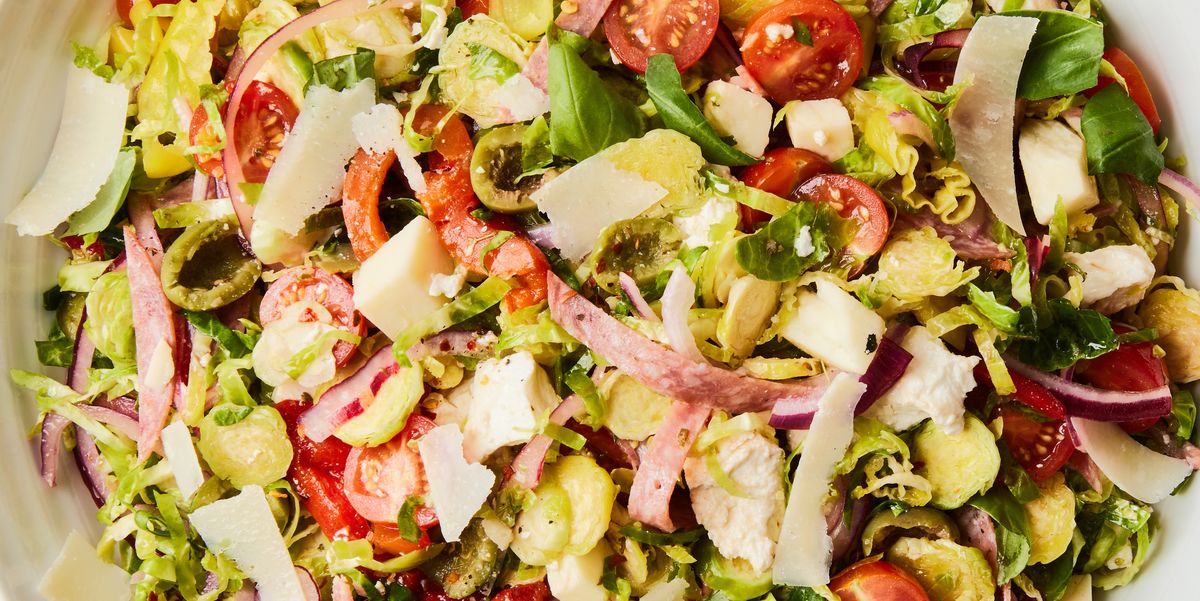
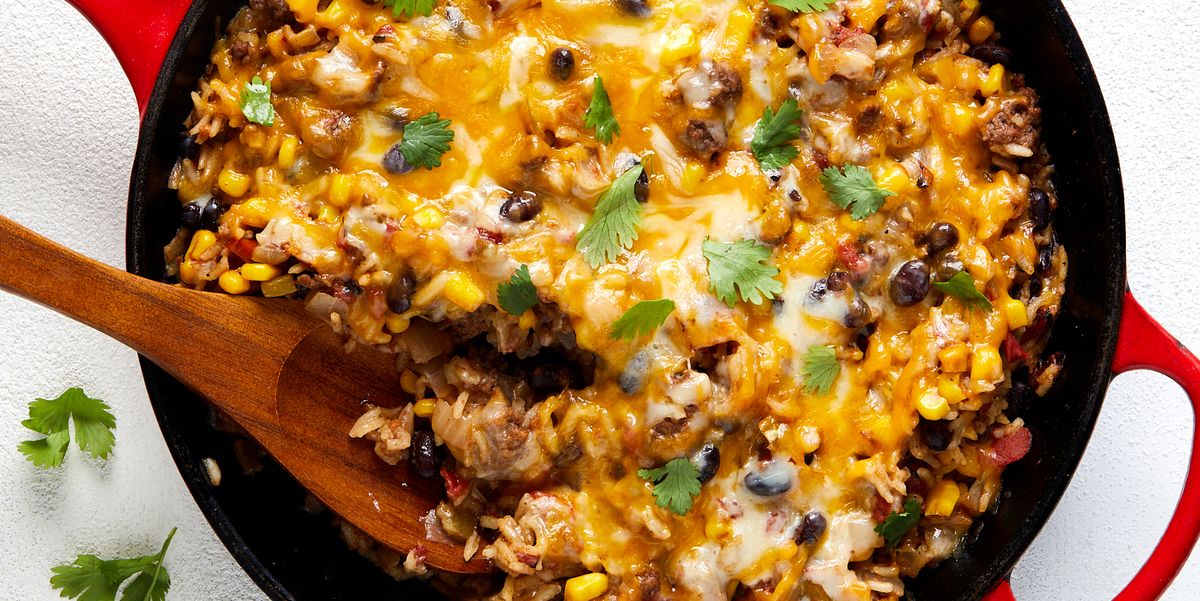
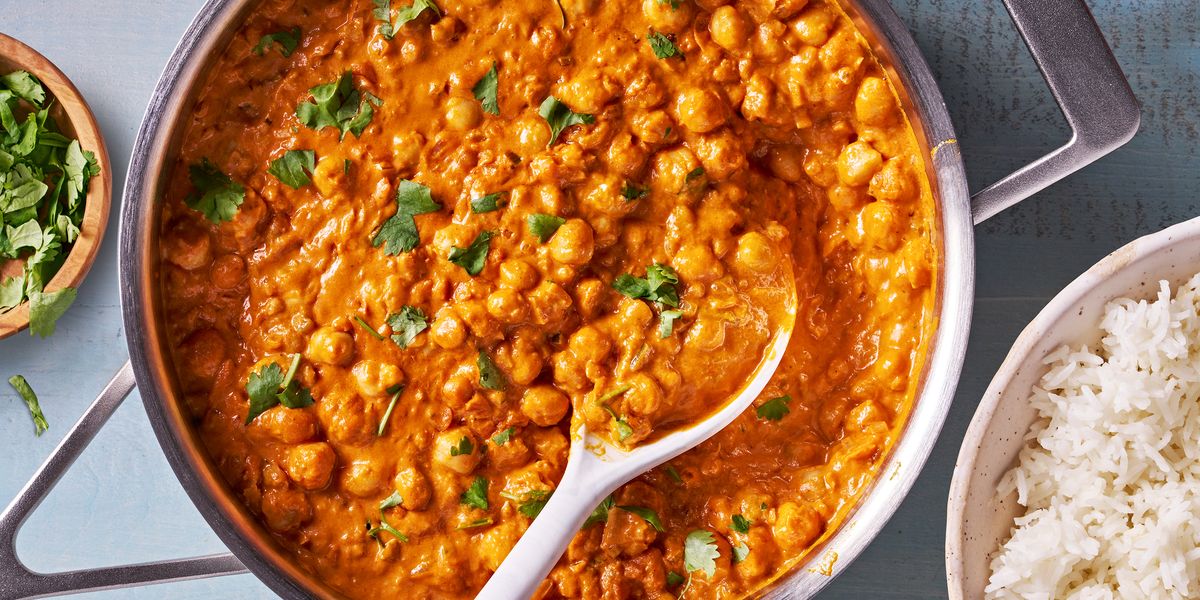







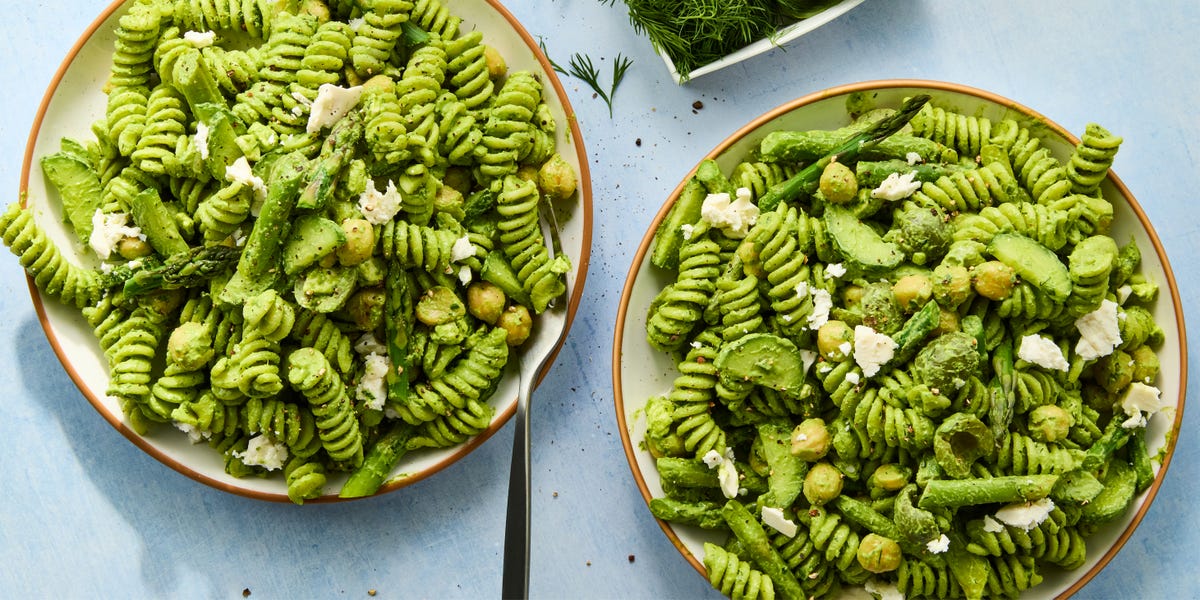


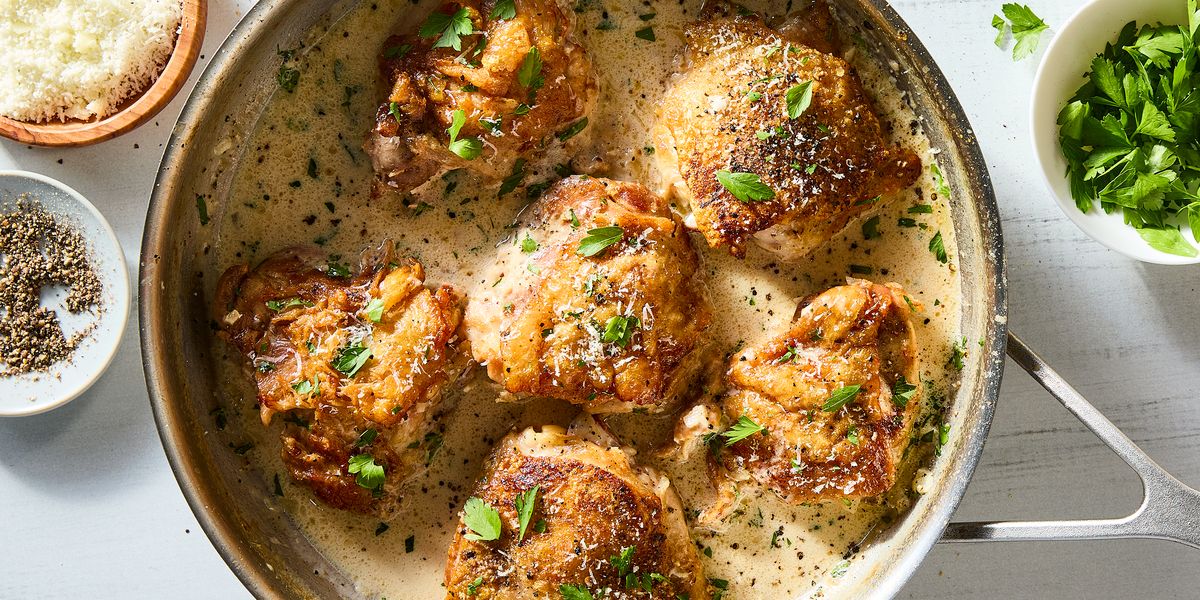

Leave a Reply